
By David Kramer
The Sierra de la Laguna had been a legend and a lure, growing in my imaginings for some time. The seed was planted years ago, under the huge and newly-built palapa restaurant on the beach at Cerritos. A middle-aged, expat ‘bro’ with tattoos and Oakley sunglasses that reflected the world as a fish-eye rainbow scene had been talking of all ‘the sick waves’ along the coast. ‘But when it’s flat the mountains are sick too.’ He gestured in the other direction, towards the earthen spine of the peninsula, and spoke of a high elevation oasis with swimming holes, rock slides, and petroglyphs abounding.
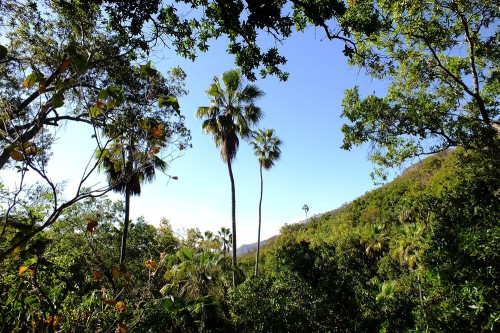 That was the Sierra de la Laguna. And that is the legend that lived in my consciousness for so long. But that is not what you will read more about here. We did not find swimming holes, rock slides, nor petroglyphs. We hardly found water. And in leiu of petroglyphs the item of most interest that we found on the rocks were ‘patches of fur’ that turned out to be colonies of social spiders. But de todos modos, some ten years after that afternoon at Cerritos…
That was the Sierra de la Laguna. And that is the legend that lived in my consciousness for so long. But that is not what you will read more about here. We did not find swimming holes, rock slides, nor petroglyphs. We hardly found water. And in leiu of petroglyphs the item of most interest that we found on the rocks were ‘patches of fur’ that turned out to be colonies of social spiders. But de todos modos, some ten years after that afternoon at Cerritos…
I was driving solo down MEX 1 into Baja California Sur early February. The prior 10 days had been spent with exceptional swell along the central coast. Days melding into dreams melding into days of surfing time-bending waves. I would have stayed longer, but a sea mite rash akin to a poison oak reaction had progressively worsened to a degree where I would forgo pointbreak perfection in hopes of an itch-free night of sleep.
I’m not quite sure how to explain it, so I won’t, but a scenario ensued that had me traveling with a mixed band of Mexican/Spanish/French-canadian/El Salvadorian/Gringo hippies, gypsies, and expats… quite a suitable sample of the transplant subculture one will find magnetized to the southern tip of the peninsula. There had been talk of incorporating the Sierra de la Laguna into our exploits. I seized the opportunity as a means to validate the legend.
The plan was to access the mountains from the west starting at a rancho near El Pescadero and hike a few miles up the arroyo to a saddle in the mountain crest. We heard stories that on the far side of the saddle lay lush pools of water and we thought the shores of these pools would make a fine camp. As a wildlife biologist, I was enthused by the prospect of exploring the ecology of a rarely-accessed region. We would hike down the following day. That was the plan.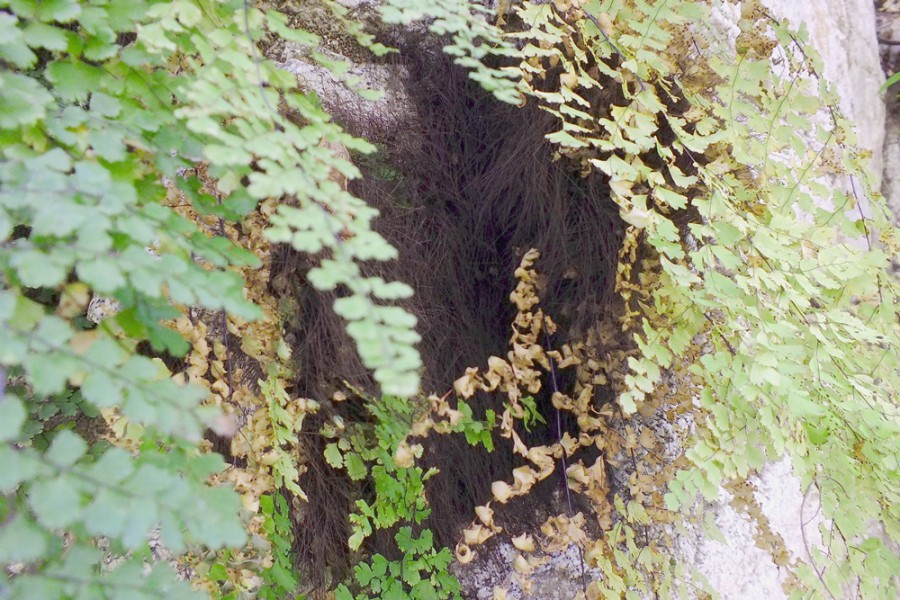
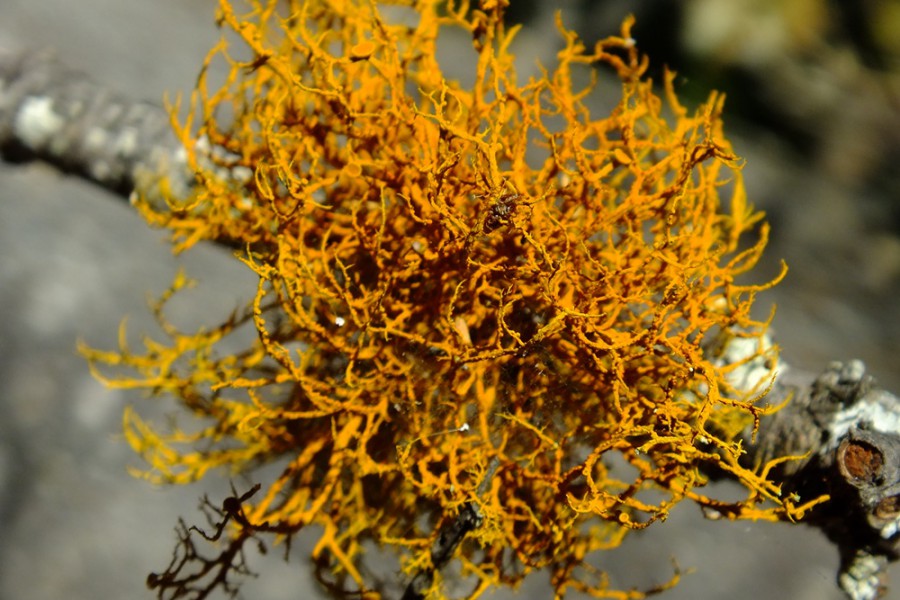
Naturally, not everyone in our contingent was game for a backpacking expedition into an unknown area, so we were whittled down to a group of four. We prepared provisions of beans, avocados, tortillas, nuts, rum, and tequila, packed packs, and made an early morning dirt road rumble to El Sacrificio, the private ranch of a friend-of-a-friend at the foot of the sierra.
Sierra translates as ‘mountain range’, but it also means ‘saw’, and this is an appropriate representation of the skyline broken between mountain and sky that suspended above the trailhead. The peaks of Picacho and Salsipuedes were just as jagged and raw as any rock monolith that has ever drawn a wayfarer to the mountains.
Laguna translates as ‘lagoon’ or ‘lake’. The heart of the Sierra de la Laguna, and where most visitors visit, lay to the north of where we were. The highest peaks of the range are encountered there, as well as pines and a grand meadow in the footprint of an ancient lake, for which the sierra was named.
I mentioned the trailhead earlier. It wasn’t so much a trailhead, as a place next to a large, dubious cage where the beaten road narrowed to only permit passage by bestia or foot. Being without bestia (mule/horse…) we strapped on our packs and started up the trail.
Plumerias overhung a rock-sided and deep box canyon that dropped below our left hands. I thought the plumerias rare and beautiful despite the facts that they are quite common in the Cape region and were not flaunting fragrant flowers in the middle of the dry season. The trail continued to the rancho, El Sacrificio, where there were a couple rustic cabins and corrals along the dry arroyo that rose up to the mountains above us.
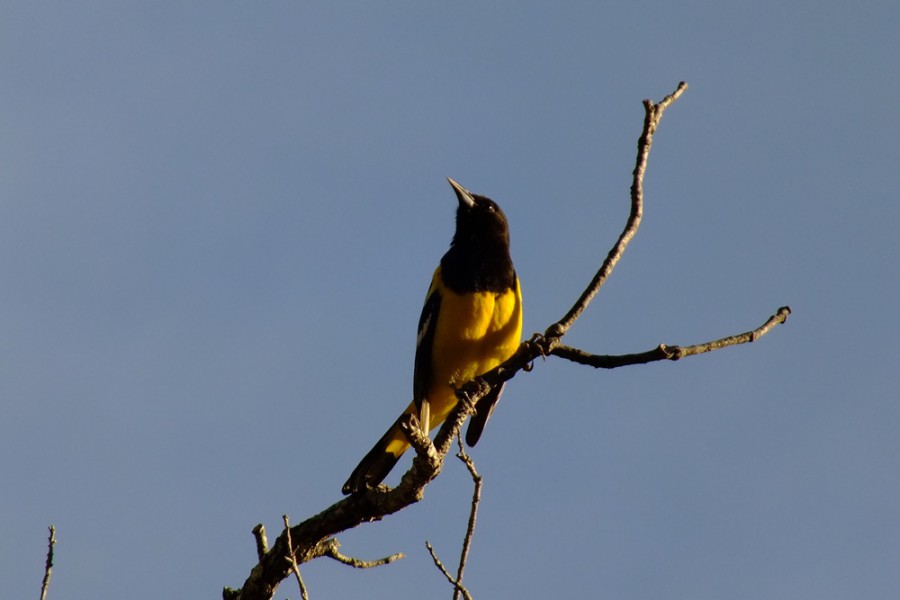
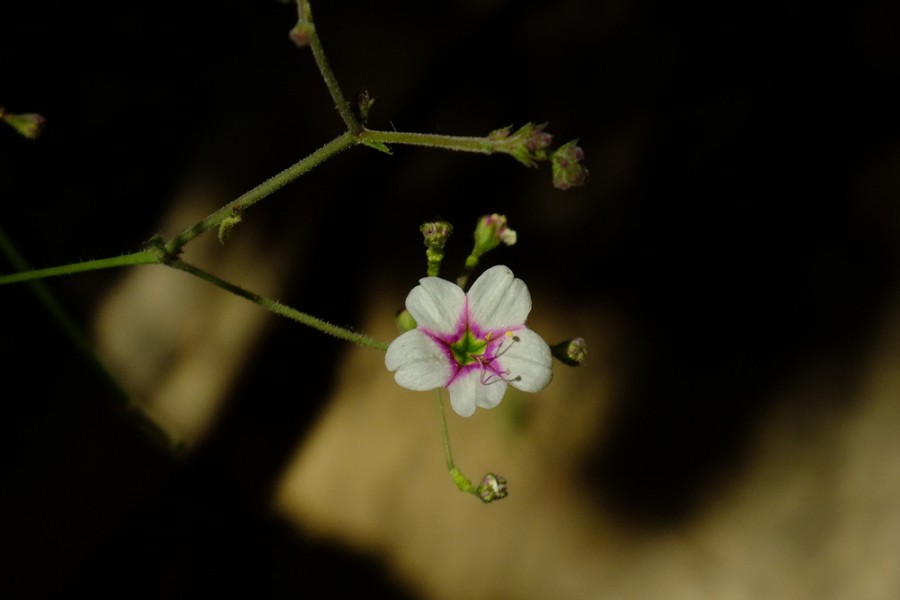 I mentioned El Sacrificio. This obviously translates as ‘The Sacrifice’ and aptly so, at least in regards to our excursion. The distinct trail we had followed to the ranch quickly deteriorated into choosing the best cattle trail, trudging up sandy arroyo bottoms, scrambling over boulders, and negotiating our way up or around the towering rock walls of dry waterfalls. What we estimated at only around three miles as the crow flies, from the ranch to the saddle, was taking hours of sweating and climbing in the midday sun.
I mentioned El Sacrificio. This obviously translates as ‘The Sacrifice’ and aptly so, at least in regards to our excursion. The distinct trail we had followed to the ranch quickly deteriorated into choosing the best cattle trail, trudging up sandy arroyo bottoms, scrambling over boulders, and negotiating our way up or around the towering rock walls of dry waterfalls. What we estimated at only around three miles as the crow flies, from the ranch to the saddle, was taking hours of sweating and climbing in the midday sun.
But the setting was spectacular. We climbed out of desert thornscrub into verdant canyons populated with a peculiar mix of palm, oak, and cactus. Wild figs clenched to cliff faces with white tangles of roots feeling out the rock crevices. Evergreen oaks reached out to offer sweet shade under leaves larger than one’s hand.
When we had inquired about the area before leaving civilization, locals talked of our route as having been a common means for missionaries to cross the Sierra de la Laguna in the days of lore. And we found evidence of their passing. Feral guavas were sporadically intermixed within dense thickets of vegetation on the riverbed of the canyon, as were grape vines with stocks up to half a foot in diameter.
The bird population changed in turn with the vegetation and soon we were within a demographic similar to that of the Sierra Nevada or Rocky Mountains: Black-throated Grey Warblers, Western Tanagers, Lazuli Buntings, and Warbling Vireos. When we reached the mountain crest there were even Band-tailed Pigeons.
We did finally reach the mountain crest and a flat clearing on the saddle where we set our packs down. In all of the ascent we had only encountered a few murky trickles of water and with our canteens nearly drained from the four hour trek, this became of concern. Thus it was prioritized to find these supposed pools of water on the eastern slope of the saddle, so I dropped down into that far valley to scout. I followed a dizzying circuit of trails, investigated a number of draws, got lost, and bushwhacked back to the saddle without finding the pools.
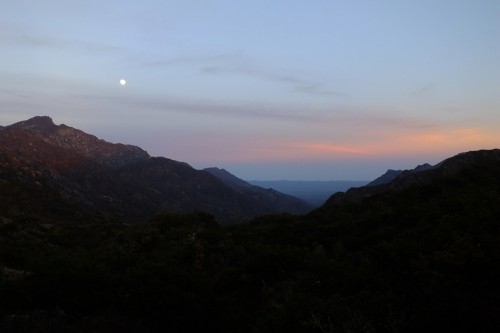
The sun was setting and an incredible scene splayed out before us. To the west, the saddle fell off into the arroyo, the desert, and the sunset hues, to where the sun kissed the Pacific Ocean many miles distant. To the east of the saddle, a thick carpet of oak and palm bowled out below the crag of Cerro Picacho and an almost full, gibbous moon lay on a lavender horizon over the Sea of Cortez.
Someone volunteered to hike down to the closest trickle of water to boil a few potfuls and replenish our bottles. The rest of us got a small fire lit and started on dinner. The night progressed as most of our nights did at that time: food, spirits, and stars, accompanied by campfire serenades from the ukulele and charango (analagous to a South American mandolin). We spread the coals and covered them with sand to make a heated bed and slept to the tremolo lullabies of Western Screech Owls.
The descent was normal: losing ourselves on dwindling cattle trails; bushwhacking through thorn thickets; dropping the ukulele off a cliff, spotting a wild boar and ample puma scat… normal. We left the Sierra de la Laguna without having found what others had found. But we had found what we had wanted. Adventure awaits wherever you choose to look for it.

All photos by David Kramer
